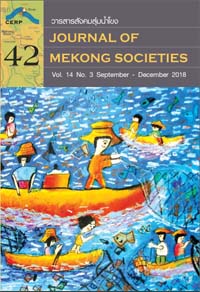New Cities and the Penetration of Siamese Colonial Power into the Physical Space of Monthon Payap
Main Article Content
Abstract
This article describes the late 19th and early 20th century transformations that occurred in the physical environment of Monthon Payap and their effects on the cities of the region by using the historical approach. The findings consist of two factors that resulted in the production of colonial spaces by the Siamese government. The first was Siam’s security fears, which led to establishment of military zones in response to internal revolts, particularly the 1902 Shan rebellion, and the presence of Western powers in nearby regions. The second factor was the influence of western-style city planning, a way of thinking which gained strength from the efforts of the Siamese government itself and from missionaries, as can be seen in the many changes witnessed in cities in Monthon Payap during this period. City planning became attractive to the Siamese government because of the advantages it offered in controlling labor and easing governance. In cities that were clean and equipped with public sanitation facilities, the outbreak of illness in the workforce was easier to prevent. Moreover, such cities could be entered easily, which in turn made governing, patrolling, and the spread of religion simpler. The pleasant and shady city scapes resulting from these urban transformations were favored by the resident foreigners, who were thereby provided with spaces for rest and relaxation, and so these new forms of urban space gradually displaced traditional ones.

